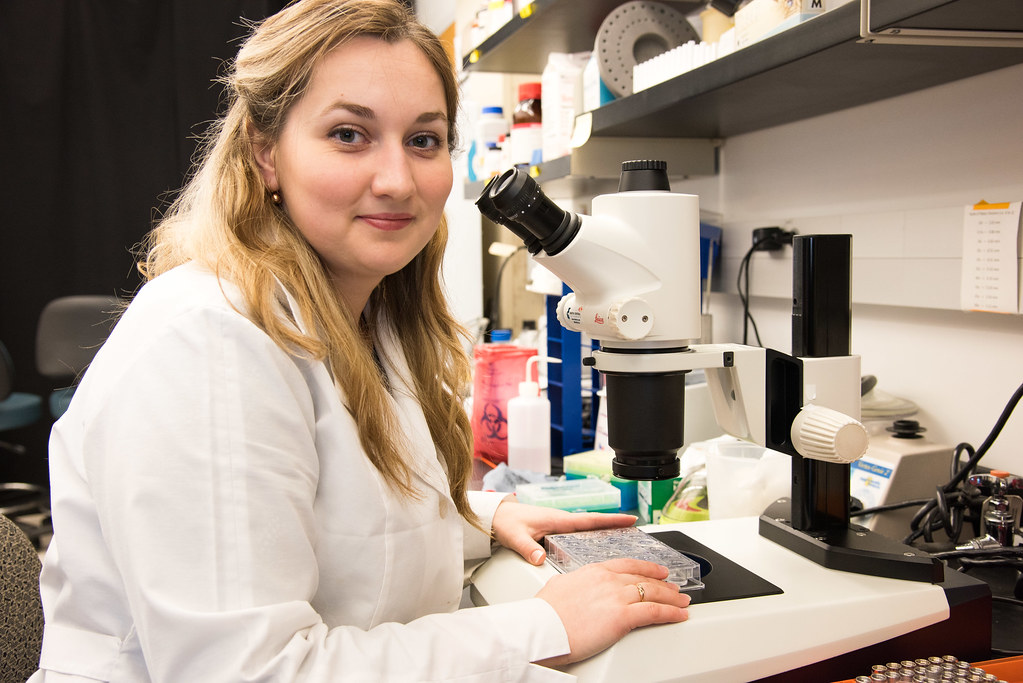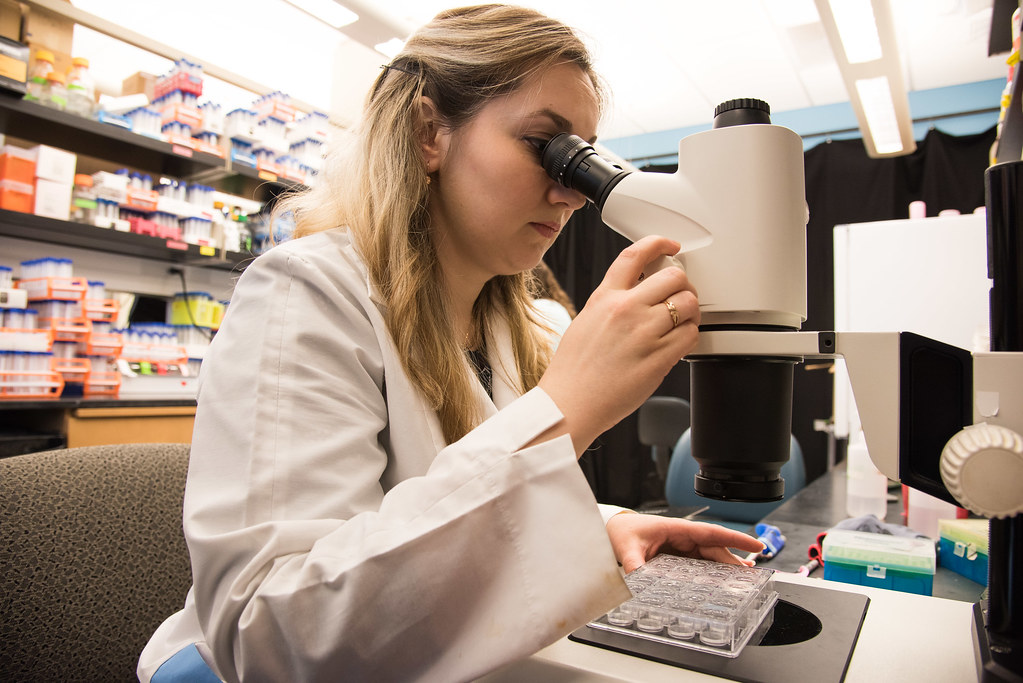Gres reflects on the dissertation in HIV research

By Samantha Kummerer, Bond LSC
Ph.D. candidate Anna Gres frequently described her success at the Bond Life Sciences Center as being lucky.
“It was challenging and stressful, but I think everything worked out well for me and I was lucky in a way. I was fortunate to get to the good labs, interact with great people, attend courses, attend conferences and grow both professionally and personally,” she said.
Her mentors and colleagues use other words to describe her.
Bond LSC scientist and mentor Stefan Sarafianos called her “super spectacular” and her work “nothing short of outstanding” when introducing Gres before her dissertation defense on September 1.
When Gres came to the University of Missouri five years ago as a chemistry student, she knew she wanted to learn about crystallography, a technique that examines the precise arrangement of atoms and the geometry of molecules by looking at the image of the crystal under an X-ray beam. This interest led her to Sarafianos’ lab and into research on HIV.
“I learned a lot of new and exciting things, and I love this about research in general, you have multiple opportunities to evolve if you invest time,” Gres said of her time in Bond LSC. “I’m thrilled I decided to pursue a Ph.D. and do research. It’s definitely something I enjoy a lot.”
She studied a specific HIV protein. Her research involved using X-ray crystallography to determine the structure of the HIV-1 capsid protein. The capsid surrounds the virus’ genetic material, protecting it from a cell’s defenses while transporting the viral DNA to the cell nucleus. Her research produced one of the most complete models of the capsid protein. Previous attempts to understand the protein worked with engineered versions of it rather than the native version.
Gres’ research was the first to reveal the closest representation of the hexameric capsid lattice in intact HIV-1, a discovery that will open the door for further insights.
She explained this knowledge allows scientists to understand the viral life cycle better, study interactions of the viral protein with cellular proteins, further develop capsid-targeting antivirals and improve current ones.

Gres also studied complexes of capsid protein with host cell factors and small molecules that interact with the protein and prevent infection. Other time in the lab was devoted to exploring more than 30 mutations in the protein. Around half of the mutants still need to be completed and analyzed.
Currently, no approved drugs target this protein although it plays a critical role in the virus. Previous clinical trials failed, but recently the protein re-emerged as a promising target. Earlier this year, Gilead, a biopharmaceutical company, announced it would begin capsid inhibitor testing after initial studies revealed its potential as a treatment strategy.
When Gres finished her dissertation defense, she did so with tears in her eyes as she thanked her mentors, family, and friends for their support throughout this five-year journey.
“Work can be stressful; sometimes you need to vent because ‘the project is not working.’ It’s nice when you have people who can listen to you and calm you down and tell you it’s going to work out eventually,” she said.
Her research more than worked out and will continue to provide insights on the disease that affects millions each year.
As for Gres, she is leaving HIV research and the United States behind.
Soon she will be moving to Sweden to start a post doctorate position at the Uppsala University studying chromatin remodeling factors. Gres will bring her skills in structural biology and will transition to cryo-electron microscopy. She explained the topic would be new for her, but that’s why she chose it, so she can continue learning.

